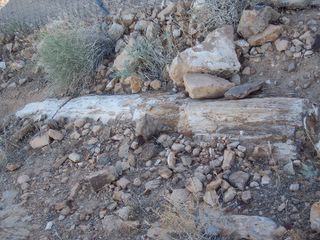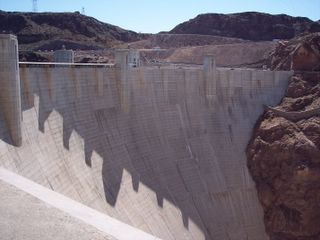I decided to take a little drive to see the Tule Elk State Reserve today. It is about 20 miles from Bakersfield, so it isn't very far. The reserve is smallish. There are a few tables to picnic on and a viewing area with a telescope to see the elk up closer. There were a few herds out in the reserve, and from what I could see, they were bulls...all of the ones I saw had antlers. Through my binoculars, I could see the antlers were covered in velvet. I wasn't able to get any good pictures, though, since the elk were so far off.
After seeing the elk, I decided to go back to Carrizo Plain again, since it wasn't very far. This time, I took Highway 58, which cuts through Buttonwillow and McKittrick. It is a very windy, twisty road, and slow going, but scenic nonetheless. The hills were green, and parts of them were covered in flowers. I had to pull over at one point to take a picture. The hills were absolutely beautiful!
I stopped at Soda Lake, which is pretty dry for the most part right now. There is a boardwalk where you can walk near the shore with some benches where you can sit and watch for birds and such. There were several people out this time (last time I went I saw maybe 4 or 5 people total). It looked like a group of people on a wildflower tour. The fields were alive with color... yellows, purples, blues, whites. It was a cloudy day, but the flowers made the day look bright.
After stopping at Soda Lake, I went to the top of Caliente Ridge. Now this may not have been such a good idea since I was in a passenger car and the road is unpaved and rutty in several areas, and very steep on top of it. At one point, I nearly got stuck going up the hill....a very steep part of the hill. My car would not move because one of the wheels got stuck in a rut. I had to back up then floor it to get out. It was interesting to say the least.
But, despite the nearly-getting-stuck incident, the view from the top was worth it! It was absolutely gorgeous. I was glad I made the trip (by the way, all of the cars parked at the top were either pickup trucks or SUV's - lol).
On my way back to the main road, I saw a pronghorn antelope running across the plain. They can run very fast. In fact, they are the fastest land animal in the North America, running at top speed of 55-60 mph. I was so excited to see it, because it was the first time I had ever seen one in the wild. On the main road, I spotted a small herd of maybe 10-15 pronghorn grazing maybe 30-50 feet off of the road. I snapped a few pictures, but they didn't really show much. I just ordered a telephoto lens for my digital camera so I can get closer shots next time. I also spotted another herd on my way back to the I-5, just east of McKittrick, CA. I was surprised to see them there since I didn't think they roamed that far out of Carrizo Plain. This time, I was able to get better pictures since they were closer to the road. But they sure were keeping their eyes on me!
I posted some pictures below, so enjoy! It is almost May, so camping season is coming soon! But with the gas prices on the rise, it sure is gonna make camping more expensive.





